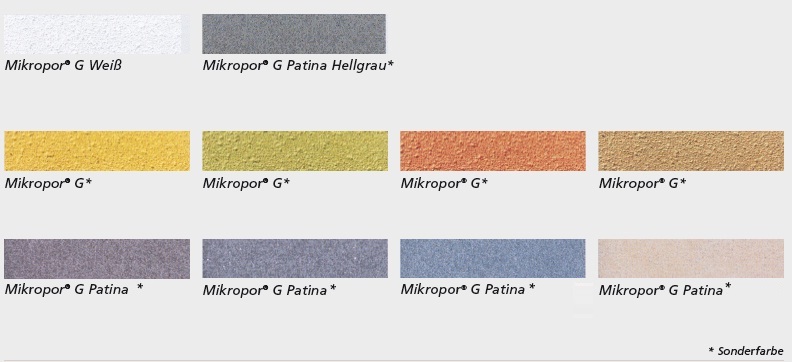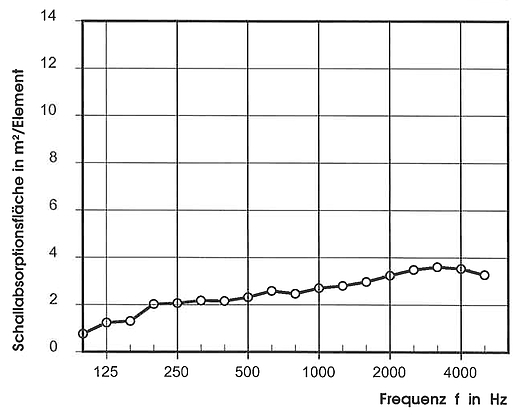Acoustic partial areas made of glass
Acoustic partial areas from Lahnau Akustik GmbH are real all-rounders. They can absorb or reflect sound, feed fresh air or dissipate heat (special version). Our acoustic partial areas are available in standard dimensions max. 2500 x 1250 mm. They can be produced to allow the integration of different lighting variants. In addition, there is also an option of a version as a seamless acoustic partial area. With so many options available architects have the freedom to choose from a wide range of variations.
Material:
expanded recycled glass granulate, bound with inorganic binder and with integrated stiffening elements made of galvanized sheet steel.
Surface:
Acoustic membrane with matt, smooth and non-directional surface, optionally available as sound absorbing (G) or sound reflecting (GT)
Surface colour (visible side):
White, (light reflectance value > 90%)
In special colours as per sample on request
Imagio G Design in different colours and structures on request.
Care / refurbishing:
It is possible to clean localized soiling using a damp synthetic sponge or brush.
Vacuum clean with vacuum cleaner and brush attachment
Refurbishable by spraying with Wilhelmi acoustic paint (WAF-R), without any loss of sound absorption properties.
Rear:
Acoustic membrane (without colour coating)
Edge configuration:
All sides covered with edge tape in the same colour tone as the surface
Panel thickness:
Approx. 18 mm
Dimensions:
2500 x 1250 mm; smaller dimensions possible on request
Building material class:
A2 non-combustible to DIN 4102
Weight per unit area:
Approx. 10 kg/m2
Humidity:
Permanent high levels of humidity (> 70%) affect the dimensional stability of the panels.
Total weight:
Approx. 35 kg
Hanging:
- With thin wire hangers, wire lengths approx. 2000 mm, longer lengths available on request
- With edge profiles and low suspended heights, with edge profiles on the rear of the panel and on the solid ceiling
Installation:
- On site, fit the cross-members supplied with the wire hangers to the rear of the panel. Fit the bottom parts of the wire hangers to the cross-members. Fit the top parts of the wire hangers to the solid ceiling together with the wires. Feed the wires into the bottom parts of the wire hangers and adjust their height. The wire hangers can easily be adjusted to any desired length
- Using edge profiles fit 3x edge profiles as cross-members onto the rear of the panel parallel to the short length of the panel; secure 3x edge profiles to the solid ceiling as support profiles. The cross-members rest on the support profiles attached to the solid ceiling.
Lighting:
It is possible to integrate and adapt lights
System solutions on request
Products from Lahnau Akustik offer numerous design options. We offer a huge choice of special colours and surfaces. We are happy to offer advice.
Surface:
Acoustic membrane with matt, smooth and non-directional surface, optionally available as sound absorbing (G) or sound reflecting (GT)
Surface colour (visible side):
In special colours as per sample on request; optional antistatic, water-repellent special coating
MIKROPOR® G
Non-directional, fine-pore structured colour coating light reflectance value (white) > 90% (diffuse: 0.9)
MIKROPOR® GT
This version as Mikropor G but sound reflecting.
MIKROPOR® G PATINA
Non-directional, matt, smooth coloured surface coating
(the colour and structure shown in images of surfaces can differ slightly from the original)
* Special colour
We would be more than happy to send you a sample.
Feel free to contact us.
We develop effective acoustic building materials in close cooperation with scientists, clients, architects and contractors. Utilizing these high-quality materials facilitates optimum speech intelligibility in our built-up environment.
At the same time, the design options available with regard to material, surface, colour and shape are so varied that it is possible to efficiently combine the demands placed on man and an eco-friendly architecture with one another on the basis of the latest scientific findings.
A variety of acoustics tests are available to download from the Download archive.
Hanging
- With thin wire hangers, wire lengths approx. 2000 mm, longer lengths available on request
- With edge profiles and low suspended heights, with edge profiles on the rear of the panel and on the solid ceiling
Installation
- On site, fit the cross-members supplied with the wire hangers to the rear of the panel. Fit the bottom parts of the wire hangers to the cross-members. Fit the top parts of the wire hangers to the solid ceiling together with the wires. Feed the wires into the bottom parts of the wire hangers and adjust their height.
The wire hangers can easily be adjusted to any desired length - Using edge profiles fit 3x edge profiles as cross-members onto the rear of the panel parallel to the short length of the panel; secure 3x edge profiles to the solid ceiling as support profiles.
The cross-members rest on the support profiles attached to the solid ceiling.
1. Cleaning
- Before cleaning with a damp cloth, carefully remove surface dust with a brush or vacuum cleaner.
- It is possible to remove localized soiling such as fingerprints or trails of soiling close to air outlets using a firm, damp sponge together with a commercially available household cleaner or Moisture-Clean (available as a powder from Lahnau Akustik) in the respective recommended concentrations.
- Then carefully wash down the cleaned surface with clean, clear water and dab dry with an absorbent cloth or paper (kitchen roll).
- We recommended you test clean an inconspicuous area each time before cleaning.
Professional refurbishment must be carried out using Wilhelmi acoustic paint WAF-R 86 (special colours WAF-R 87).
- Quantity used during refurbishment: 400-700 g/m² depending on the degree of soiling
- Ensure the room temperature does not fall below 12 °C when applying the coating; the relative humidity should not exceed 70%.
- Once applied immediately ensure the rooms are ventilated and dehumidified.
2.1 Refurbishment
If the acoustic ceiling has become heavily soiled after many years of normal use and can no longer be cleaned properly, it is possible to restore it to a condition virtually as good as new by applying a refurbishment spray.
When applied professionally in accordance with the manufacturer’s instructions the acoustic absorbency of the wall or ceiling surface is not impaired. The refurbishment can be repeated several times, if required.
Under no circumstances should emulsion paints be applied to the surfaces using a brush or roller, otherwise the sound absorbing properties will be lost.
It is only possible to guarantee the acoustic characteristics will be retained by engaging a professional company that uses the appropriate coating machinery to professionally apply the refurbishment spray, e.g.,
Strobl Beschichtungstechnik GmbH
Hermann-Volz-Straße 50
D-88400 Biberach/Riß
Tel. +49 7351/4400-0
Fax +49 7351/4400-60

Quality management
It is possible to achieve continual improvement with the aid of quality management by involving all members of staff and optimizing company procedures across all departments. Fulfilling customer requirements is central to all we do. An integrated management system for quality, environment and occupational health and safety according to EcoStep.
Environment management
As a manufacturer of environmentally friendly products based on the raw materials glass and metal Lahnau Akustik GmbH is passionately committed to protecting the environment. We wish to contribute towards balancing economy and ecology with the aim of achieving a sustainable development taking into consideration the needs of people and nature.
The ecological benefits of acoustic panels made of recycled glass:
- 100% recycled glass
- Sustainable
- Conserve natural resources
- Winner of many ecological awards
- Optimize your LEED rating
- Healthy home environment “built-in”
- Reduce CO2
- Optimize heat insulation
With you in mind, we have introduced:
An integrated management system for quality, environment and occupational health and safety. An expert assessment documented in a report verifies that the management system fulfils
requirements and, as a consequence, the core stipulations of the following standards:
ISO 9001:2000
ISO 14001:2004
ILO guidelines on occupational safety and health (2001)


